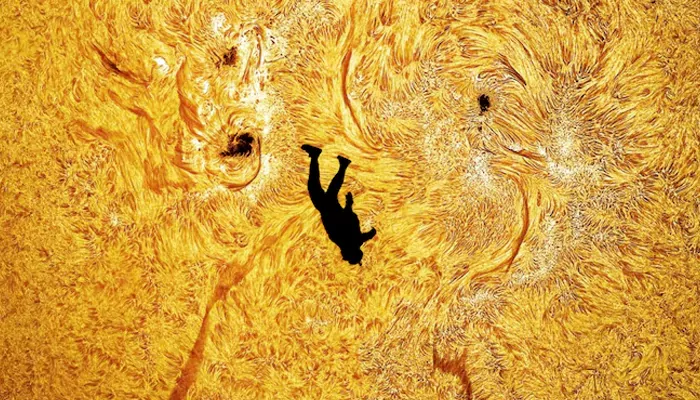.webp)
Here are today’s most important updates from the realm of Science and Space.
Astronomers Witness a Planet Being Peeled Apart by Its Host Star
Astronomers have obtained clear evidence of a violent burst of material hurled into space by a distant star. The outflow was strong enough that any nearby planet in its path would likely have its atmosphere stripped away. This burst was identified as a coronal mass ejection (CME), a type of eruption frequently produced by the Sun. During a CME, enormous quantities of charged particles and plasma are pushed outward from the star, filling the surrounding space. These dramatic outbursts drive what we call space weather, influence events such as auroras on Earth, and can gradually erode the atmospheres of neighboring planets.
Astrophotographer Catches the Sun Being Photobombed And It’s Breathtaking

Astrophotographer Andrew McCarthy has captured a truly once-in-a-lifetime image that’s redefining “photobomb.” In a remarkable display of meticulous planning and timing, McCarthy photographed his friend skydiving right across the face of the Sun, a feat never before captured on camera. Using a specialised solar telescope equipped to capture the Sun in hydrogen-alpha light, which highlights the solar atmosphere's fine details, McCarthy recorded not just the moment of the jump but also the intricate textures and activity on the Sun’s surface. The moment combines the thrill of skydiving with the grandeur of our closest star, making viewers reflect on the convergence of Earth-bound experiences and the universe beyond.
Moon’s Hidden Heart Exposed: Scientists Confirm Its Inner Secrets

A thorough investigation found that the inner core of the Moon is a solid ball with a density similar to that of iron. Denser material inside the Moon falls towards the center, and less dense material rises upwards. This activity has long been proposed as a way of explaining the presence of certain elements in volcanic regions of the Moon. lunar core is very similar to that of Earth - with an outer fluid layer and a solid inner core. We know that not long after it formed, the Moon had a powerful magnetic field, which started to decline about 3.2 billion years ago. Such a magnetic field is generated by motion and convection in the core, so what the lunar core is made of is deeply relevant to how and why the magnetic field disappeared.
Breakthrough: Scientists Identify the Brain Circuits That Spark Anxiety

Anxiety disorders are the world's most common type of mental health condition, impacting the lives of around 360 million people. Researchers have now rebalanced a few neurons in the amygdala, a part of the brain responsible for decision-making, recall, and managing emotions. This rebalancing was done via a gene called GRIK4, which has an important role in brain messaging. When overexpressed, GRIK4 increases the production of a protein called Gluk4, which triggers anxiety-like behaviors. In addition, the team identified a specific type of neuron in the amygdala as responsible for the symptoms of anxiety.





.WEBP)
.webp)
.WEBP)
.WEBP)
.WEBP)

.webp)
.WEBP)